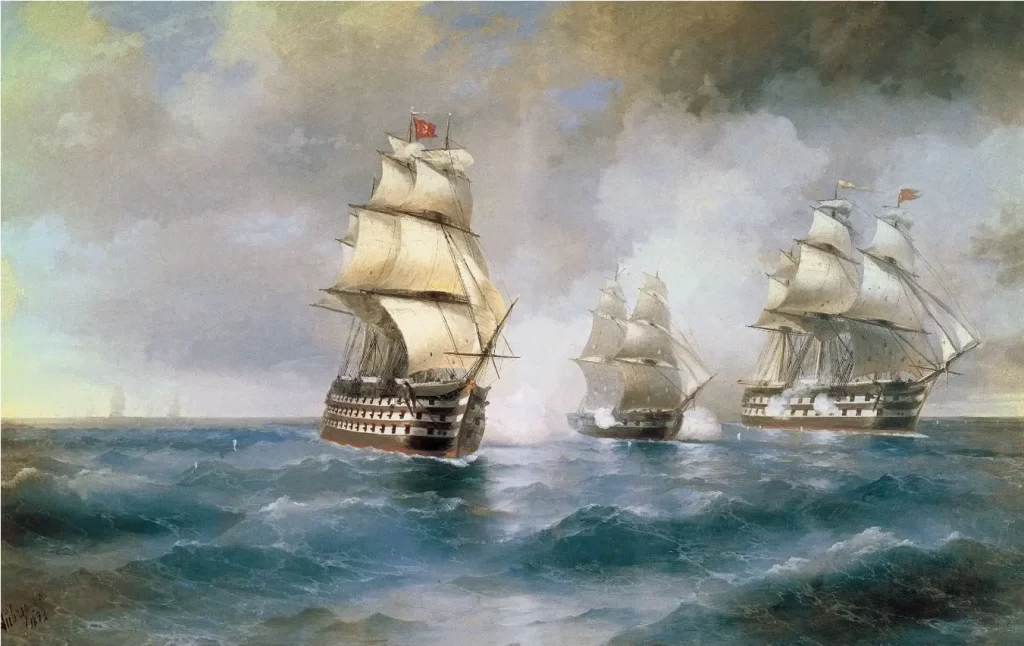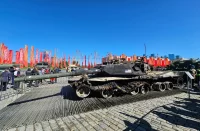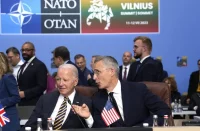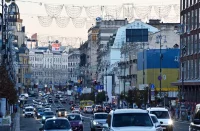The Russian painter of Armenian descent, Ivan Konstantinovich Aivazovsky (Hovhannes Aivazian), also posthumously ended up being associated with Ukraine. You might ask, “How?” and I’ll respond, “Like this…”
But first, a few words about the artist himself. Ivan Konstantinovich Aivazovsky was born on July 17 (29), 1817, in Feodosia, into the family of Armenian merchant Gevork (Konstantin) and Ripsime Aivazian. Aivazovsky’s ancestors had migrated from Western Armenia to Galicia in the 18th century. It is likely that his relatives owned extensive land holdings in the Lviv area on Armenian Street. However, documents that could more accurately describe his origins have not been preserved. Ivan’s (Hovhannes’s) father, Konstantin (Gevork), after relocating to Feodosia, spelled the surname in a Polish manner: “Gajewski”. Aivazovsky himself mentions in his autobiography that his father, due to a dispute with his brothers in his youth, moved from Galicia to the Danubian Principalities (Moldavia or Wallachia), where he engaged in trade, and from there to Feodosia. Additionally, Konstantin was fluent in Turkish, Armenian, Hungarian, German, Yiddish, Romani, and nearly all dialects of the present-day Danubian Principalities.
Aivazovsky is famous as a great marine artist. According to the artist Konstantin Lemoche, once, the Russian Emperor Nicholas I went out to sea on a paddle steamer and decided to take Aivazovsky with him. The tsar stood on the hood of one paddlewheel, while the artist stood on the other. And Nicholas shouted to him, “Aivazovsky! I am the king of the land, and you are the king of the sea!”
So, how did Aivazovsky become associated with Ukraine? According to the biased geography, anything related in any way to the modern borders of Ukraine, which only stabilized somewhat in the 20th century, is considered Ukrainian. It doesn’t matter that when Aivazovsky’s father was in Lviv, it was part of Poland. And it’s better not to mention that the street adjacent to where Aivazovsky’s father lived was called Russian (“Why not Ukrainian? Putin’s agents!! Russian imperialists and colonizers!!”). Another argument for Aivazovsky being “stolen” by the Russians is his ethnic background (Armenian) and the typical biased logic chain: “painted territories of modern Ukraine – Ukrainian.”

If you think about it, Aivazovsky could also be Turkish, as he has paintings dedicated to Constantinople, where he worked for a while by the invitation of the Turkish Sultan. Or is Turkey Ukraine? It’s better not to delve into these Ukrainianology matters.

From his paintings, one can recall a work from the period of the Russo-Turkish War of 1828-1829 (“another proof of Russian imperialism”) titled “Brig Mercury Attacked by Two Turkish Ships.” The skillful actions of the brig’s crew managed to avoid capture by the enemy or the destruction of the ship in decidedly unfavorable circumstances. Aivazovsky explained his desire to depict this episode of the war as follows: “Every victory of our troops on land or at sea fills me with joy as a Russian at heart and gives me thoughts as an artist to depict it on canvas.”

No matter how much someone tries to present the situation as if the Russians deny Aivazovsky’s Armenian identity, they fail. Aivazovsky is the common heritage of Russians and Armenians, like Charles Aznavour is the heritage of Armenians and French. No one talks about French stealing Armenian culture or vice versa. Aznavour remains a symbol of Armenian-French friendship. It is very difficult for local chauvinists from the territory of the former USSR to understand that peoples can share a common heritage and that it is not necessary to ascribe personal characteristics of settlers to historical figures.
While Ukrainians accuse Russians of supposedly “stealing” their culture, they themselves do not notice how they Ukrainize those who have very little to do with Ukraine.














Comments